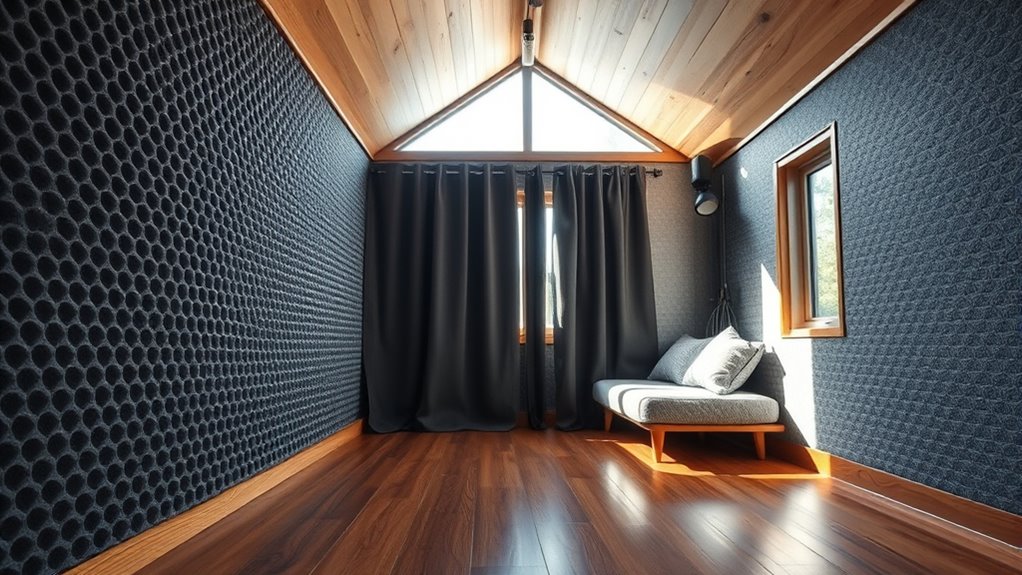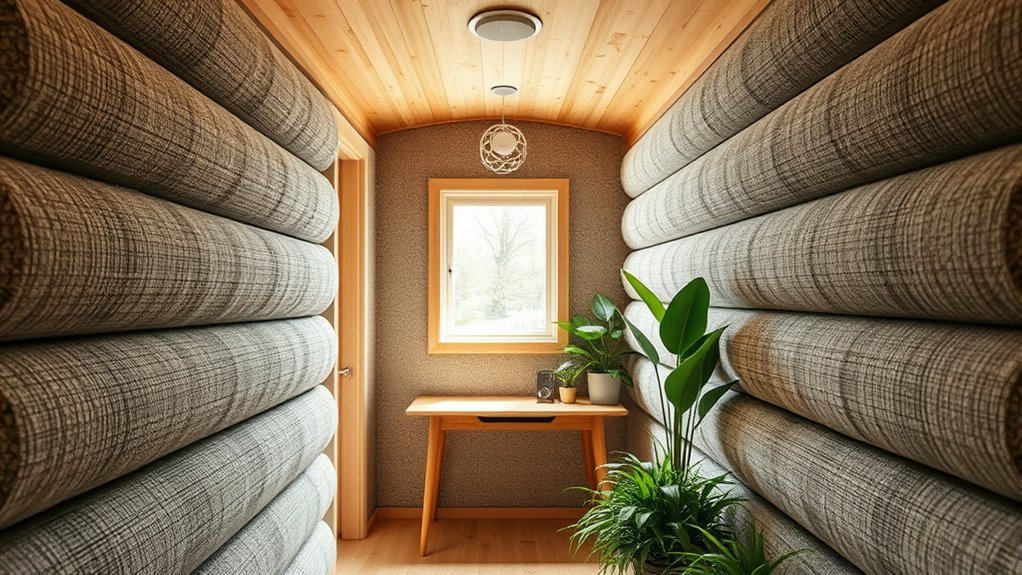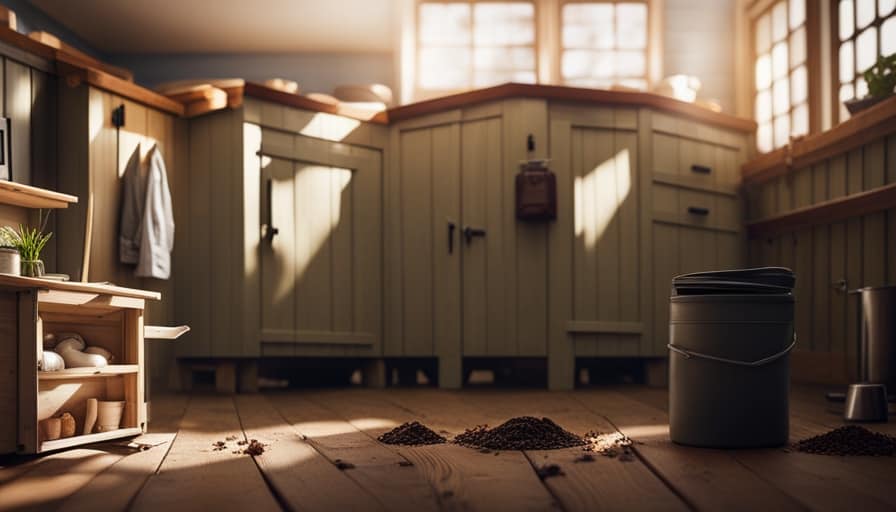If you’re considering ways to keep your tiny house quiet, you’ll find that soundproofing is entirely achievable with some strategic adjustments. From sealing gaps to adding mass to walls, there are practical steps you can take to minimize noise transfer. But where should you start, and what methods will give you the best results without sacrificing space? Exploring these options can help you create a peaceful refuge inside your compact home.
Key Takeaways
- Seal gaps and cracks around windows, doors, and walls using weatherstripping or acoustic caulk to prevent sound leaks.
- Add mass-loaded vinyl or extra drywall layers with damping compounds to walls and floors for better sound blocking.
- Install acoustic panels, foam tiles, and use textiles like heavy curtains and rugs to absorb sound and reduce echoes.
- Use double-pane or laminated windows and reinforce doors with sweeps and weatherstripping to minimize external noise infiltration.
- Strategically position noisy areas away from sleeping zones and combine layout with soundproofing materials for optimal noise control.

Living in a tiny house offers many benefits, but noise can quickly become a problem if not properly addressed. The compact space means sounds travel easily, making it important to implement effective soundproofing strategies. Luckily, there are plenty of soundproofing materials and noise reduction techniques you can use to create a quieter, more comfortable environment.
First, focus on sealing gaps and cracks around windows, doors, and walls. These tiny openings allow sound to seep in or escape, undermining your efforts at noise reduction. Use weatherstripping or acoustic caulk to seal these spaces tightly. This simple step considerably reduces noise infiltration and improves overall soundproofing effectiveness.
Sealing gaps with weatherstripping or acoustic caulk greatly enhances your tiny house’s soundproofing.
Next, consider adding mass to your walls and ceiling. Materials like mass-loaded vinyl or dense drywall can help block sound transmission. These soundproofing materials are designed to add weight and density, which dampens sound vibrations. Installing an extra layer of drywall with damping compounds between layers can make a noticeable difference. For floors, especially if you share walls with neighbors or have a loft, adding a rug or carpet with thick padding can absorb impact noise and prevent sound from bouncing around the space.
Another essential aspect is using noise reduction techniques that target sound absorption. Acoustic panels or foam tiles strategically placed on walls absorb sound waves, preventing echoes and reducing overall noise levels. These panels are especially useful in small spaces where sound tends to bounce around. Additionally, furniture and textiles like heavy curtains, plush rugs, and upholstered furniture help absorb sound and soften the environment, making noise less disruptive.
For windows, installing double-pane or laminated glass can dramatically reduce outside noise. If replacing windows isn’t an option, consider applying thick window inserts or using heavy curtains to block sound transmission. Doors can be reinforced with door sweeps and weatherstripping to minimize sound leaks, which is essential if your tiny house is in a noisy environment.
Finally, consider the layout of your tiny house. Position noisy areas, like the kitchen or laundry, away from sleeping or relaxing zones. Using strategic placement, combined with soundproofing materials and noise reduction techniques, helps contain sound and keep your living space peaceful. Incorporating soundproofing techniques that utilize the latest advancements in materials, such as acoustic foams and mass-loaded vinyl, can further enhance your efforts.
Conclusion
By implementing these soundproofing tips, you can turn your tiny house into a peaceful retreat. Did you know that proper sealing and adding mass can reduce noise transmission by up to 80%? With strategic measures like sealing gaps, adding dense materials, and thoughtful layout, you’ll enjoy a quiet, comfortable space. It’s entirely possible to create a serene environment in your tiny home—just take these simple steps and start enjoying the tranquility today.
Hi, I’m Emma. I’m the Editor in Chief of Tiny House 43, a blog all about tiny houses. While tree houses are often associated with childhood, they can be the perfect adult retreat. They offer a cozy space to relax and unwind, surrounded by nature. And since they’re typically built on stilts or raised platforms, they offer stunning views that traditional homes simply can’t match. If you’re looking for a unique and romantic getaway, a tree house tiny house might just be the perfect option.
















